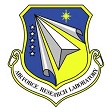AFRL posts quantum computing BAA
 On August 16, the Air Force Research Laboratory posted a broad agency announcement for Quantum Computing Sciences (BAA AFRL-RIK-2015-0008). The agency recommends that white papers be received by September 29 to maximize the possibility of award in FY 18.
On August 16, the Air Force Research Laboratory posted a broad agency announcement for Quantum Computing Sciences (BAA AFRL-RIK-2015-0008). The agency recommends that white papers be received by September 29 to maximize the possibility of award in FY 18.
The Air Force Research Laboratory – Information Directorate (AFRL/RI) is soliciting white papers under this Broad Agency Announcement (BAA) for research, design, development, concept testing, evaluation and experimentation of Quantum Computing Sciences supporting the implementation and use of Command, Control, Communications, Computers & Intelligence (C4I)-related information and communications technologies and techniques. In particular, this effort seeks to advance and assess advanced algorithm designs and technologies harnessing emerging quantum annealing techniques to support AFRL/RI’s C4I mission.
Research at AFRL/RI’s Rome Research Site, located in Rome, NY, focuses on a range of activities to include information and signal processing, communications and networking technology, cyber research, and high performance computing. Many problems fundamental to these disciplines can be expressed as optimization problems governing relationships, and then represented as mathematical equations. Quantum annealing provides a non-classical computing method for finding the global minimum (optimal solution) given these objective functions and constraints to rapidly arrive at the solution.
A Quantum Annealing Computing (QuAnCo) System may be used to study and assist a multitude of problems of interest to the DoD community, including but not limited to: machine learning, pattern recognition, logistics and scheduling (e.g., aircraft path and/or waypoint minimization). This BAA welcomes research and development applying quantum computing to any area of interest to AFRL/RI and solicits novel ideas.
Further, AFRL/RI is interested in developing a user community around this emerging technology, to consist of other U.S. Government organizations (federal, state, and local), U.S. Government contractors and commercial industry, and academia (both public and private).
Full information is available here.
Source: FedBizOpps







